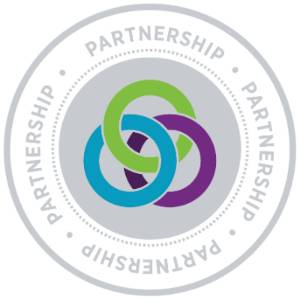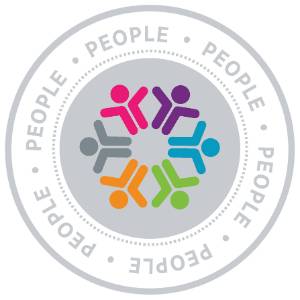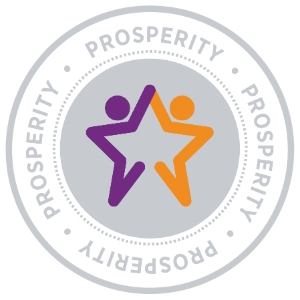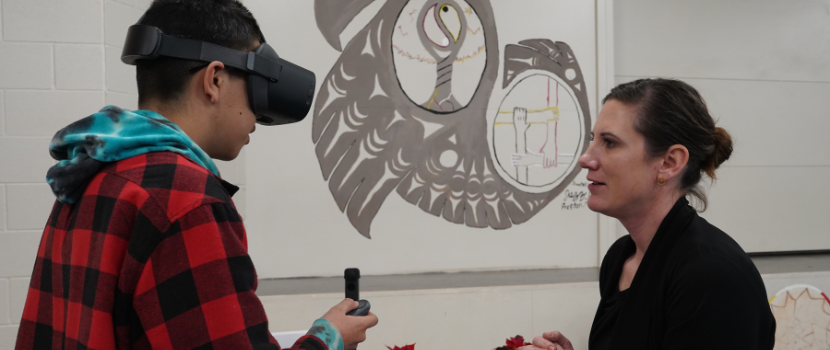
VICCIY project is supporting Indigenous youth in remote and rural communities
What began as a clinical approach to delivering counselling in rural and remote Saskatchewan communities through a virtual reality headset has since evolved into an Indigenous youth-led, culturally grounded wellness movement. Next year, the project is entering a new phase: a live, interactive VR trial that could redefine how Indigenous youth access mental health supports in Saskatchewan and potentially across Canada.
VICCIY, also known as Virtual Interventions and Community Connections for Indigenous Youth, was launched five years ago by Saskatchewan Polytechnic researcher, Lindsey Boechler. She was searching for ways to better support Indigenous youth in remote communities where traditional mental health services are often inaccessible or underutilized.
“I used to work as a paramedic in northern Saskatchewan,” says Boechler. “I’d see youth travelling hours for care or not going at all. I thought, what if we could bring the care to them through a VR headset?”
VICCIY’s goal is creating a VR platform to enhance the well-being of Indigenous youth living in rural, remote and northern communities. “VR technology holds the potential to reduce the stigma of mental health challenges and meet the needs of Indigenous youth in a culturally responsive way,” says Boechler.
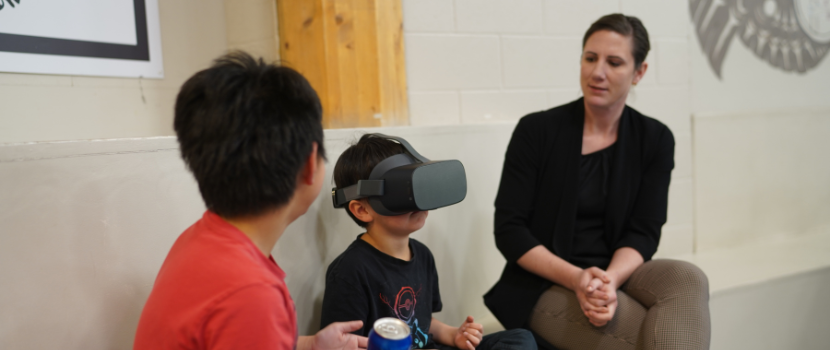
Initially focused on clinical counselling, the project quickly shifted course after engaging directly with students at Dene High School in the community of La Loche. The first round of data was collected through an environmental scan, interviews and focus groups. One focus group included community elders and was completed in Dene.
Boechler says that when discussing the potential of providing clinical counselling through a VR headset, youth told the VICCIY team that they were more receptive to services that supported their overall wellbeing and mental health.
“They wanted connection, culture and community, not just counselling through a headset,” she says.
That feedback sparked a transformation. The VICCIY team began working with Indigenous youth to co-create a more holistic approach to wellness—one that blends in-person gatherings with immersive VR experiences rooted in culture, identity and belonging.
From headsets to healing
This past May, the VICCIY team hosted its second Provincial Youth Wellness Summit in Saskatoon, welcoming 63 high school students and 18 chaperones from across the province. Over two days, Indigenous youth and chaperones participated in breakout workshops aligned with four dimensions of well-being: mental, emotional, physical and spiritual.
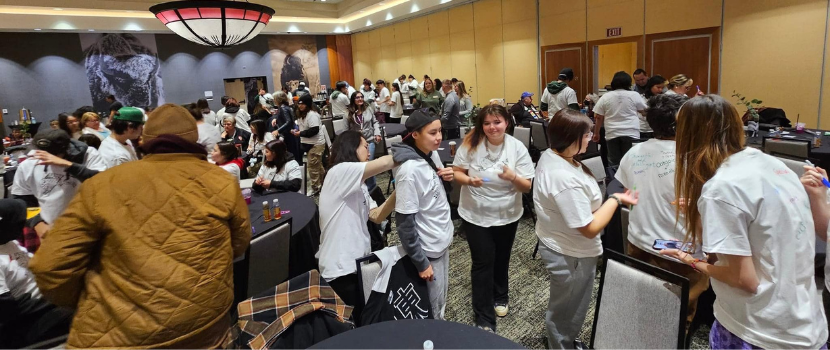
Sessions ranged from Cree language and traditional hunting practices to journaling, play therapy and even football with the Saskatchewan Roughriders. “Facilitators reported high engagement,” says Boechler, “and chaperones appreciated having their own wellness sessions too.”
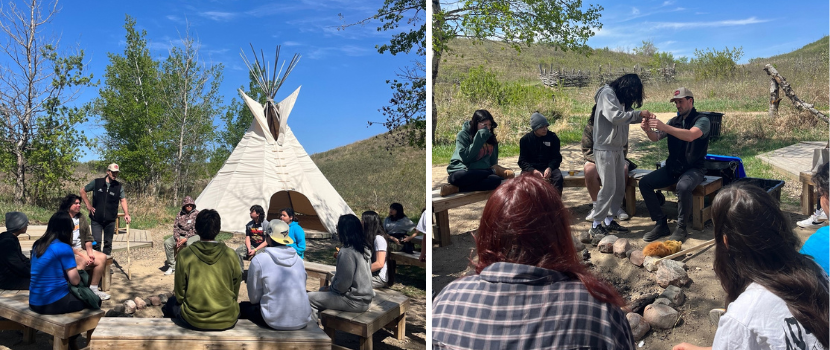
The summit wasn’t just a gathering, it was a launchpad. Eight schools that attended will now participate in a six-month VR trial during the 2025-26 school year. Unlike previous phases of the VICCIY project, which relied on pre-recorded cultural content for the VR headsets, this next step will include real-time VR interactions between youths in various communities and facilitators.
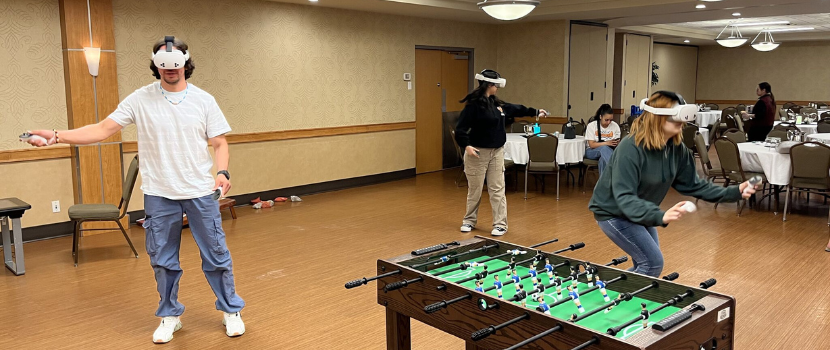
“Phase one was about building a library of VR content and building technological capacity within partnering communities,” says Boechler. “Now, we’re moving into phase two, using technology to foster live connection, coping strategies and relationship-building.”
A growing network
To date, the initiative has worked with nearly 20 communities, with participation varying year to year. “We keep an open door,” says Boechler. “Some communities came last year, others this year. The important thing is that they feel welcome and supported.”
View all the participating communities on this google map.
The VR content, including 360-degree recordings of summit workshops, is now available in schools across the province. Indigenous youth can revisit sessions led by people they met in person, reinforcing trust and familiarity.
But the impact goes beyond the headset. “One youth told us he wouldn’t use VR for counselling, but thought his brother might have benefitted,” says Boechler. “Unfortunately, he’d lost his brother to substance use the year prior. While the student wasn’t interested in therapy, he was drawn to the VR headsets and chose to participate in our interactive sessions during a school visit. That’s the power of this approach. It supports mental health in indirect, meaningful ways that engage youth who might not otherwise participate.”
Looking ahead
The ultimate goal of VICCIY is to establish VR as a sustainable, accessible tool for youth wellness. The team is already exploring international partnerships, including a collaboration with New Zealand students to combine digital art and VR to share Indigenous creation stories.
“There’s a global need for connection and belonging,” says Boechler. “We’re seeing that our stories and our struggles aren’t so different.”
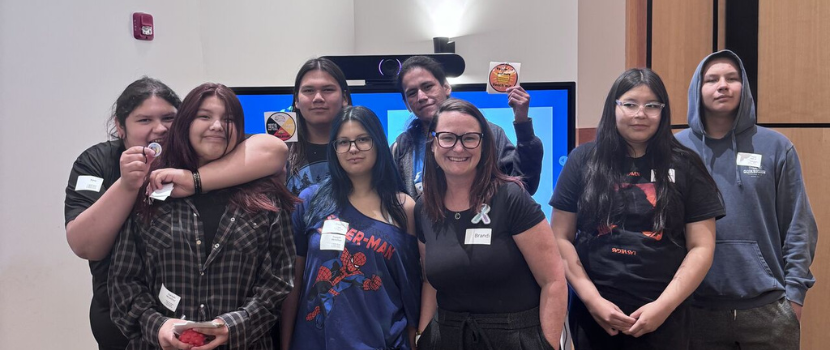
As the project continues to grow, so too does its impact. “VICCIY has changed lives through the in-person summits and the use of VR. It’s not just about mental health. It’s about identity, community and hope. That’s what makes it sustainable.”
In a world where distance often divides, VICCIY is proving that connection—real, meaningful connection—is just a headset away.
Schools interested in joining the upcoming VR trial are encouraged to reach out at vicciy@saskpolytech.ca or visit vicciy.ca.
The VICCIY Provincial Youth Wellness Summit was sponsored by Fission Uranium, Innovation Credit Union, SIGA, Saskatchewan Roughriders, SK Psychiatric Association, ACHWM, SK-NEIHR, SHRF and YouthSpeak.
The VICCIY project is funded by Centre for Health Research, Innovation and Scholarship (CHRIS) at Saskatchewan Polytechnic, Saskatchewan Health Research Foundation (SHRF) and the College and Community Social Innovation Fund (CCSIF) managed by the Natural Sciences and Engineering Research Council of Canada (NSERC). CHRIS supports faculty in the School of Health Sciences and School of Nursing in achieving their scholarly development goals and aspirations. Through CHRIS faculty can access support for publication and presenting, grant and funding applications, and request in-service sessions on a variety of scholarly topics.
Learn more at saskpolytech.ca/chris.
Saskatchewan Polytechnic is signatory to the SDG Accord. Sustainable Development Goal alignment is one of the ways Sask Polytech is leading the rise of polytechnic education.
